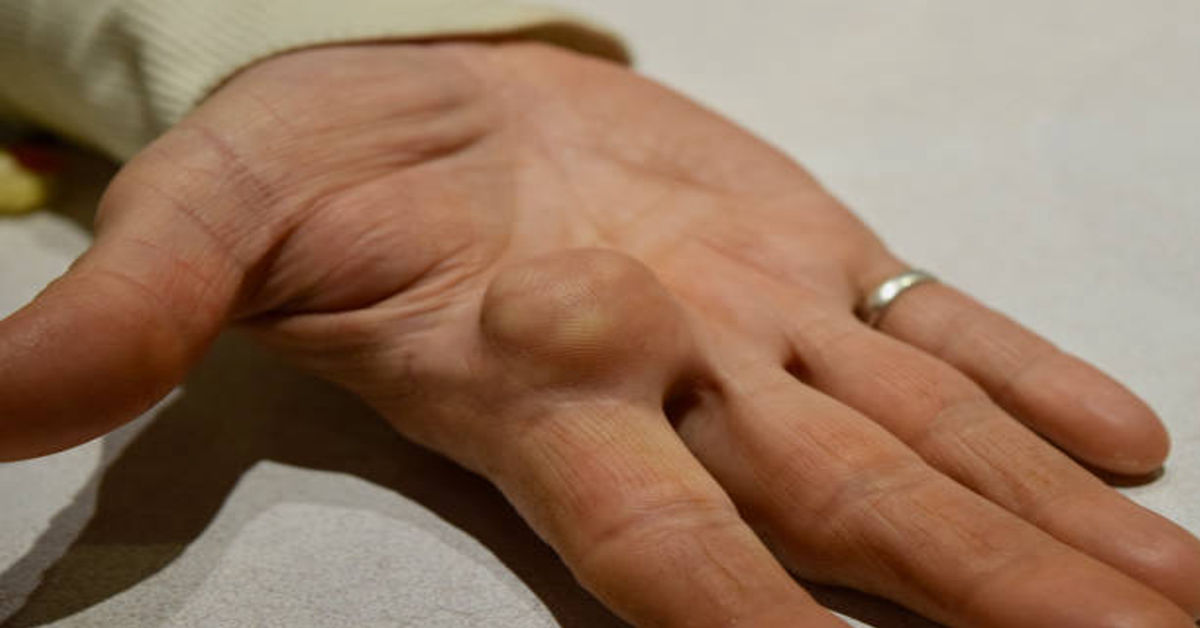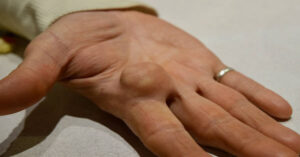A ganglion cyst is a common soft-tissue lump that typically develops near a joint or tendon, most often around the wrist, hand, foot, or ankle. Although it appears like a mysterious swelling that forms suddenly without warning, it is generally harmless and noncancerous. Many people worry when they notice such a bump, assuming it is something dangerous or infectious. In reality, a ganglion cyst is usually a benign sac filled with a thick, jelly-like fluid similar to joint lubricating fluid. While it may not always cause pain, it can create discomfort, affect flexibility or grip strength, and sometimes interfere with everyday tasks such as writing, lifting, typing, buttoning clothes, or playing sports.
Ganglion cysts have been recognized for centuries, and yet, there are still misunderstandings surrounding their cause, treatment, and prevention. Some individuals assume that removing the cyst at home by draining it, puncturing it, or hitting it with an object can permanently cure it. These methods are unsafe and can cause severe complications including infection, nerve damage, and long-term mobility issues. Therefore, proper knowledge and awareness are extremely important.
The purpose of this article is to explain every important aspect of ganglion cysts in clear, simple, and well-structured language. You will learn what they are, how they form, who is at risk, what symptoms to observe, how medical professionals approach treatment, and what lifestyle or ergonomic changes may reduce discomfort or recurrence.
What Exactly Is a Ganglion Cyst?
A ganglion cyst is a soft, round, or oval-shaped lump that generally develops along the tendon or joint capsule. Inside the cyst is a thick fluid that resembles clear gelatin. Although cysts appear externally, their origin usually comes from deeper tissues. The cyst is attached to the joint or tendon through a stalk-like structure, which acts as a passageway for fluid movement. This is one of the reasons ganglion cysts often return after temporary drainage if the stalk is not removed or proper healing does not occur.
Ganglion cysts vary in size. Some are so small that they are hardly visible, while others grow larger and become physically noticeable or cosmetically concerning. Many cysts increase in size with activity and shrink during periods of rest. This behavior is linked to joint pressure and fluid movement.
Common Locations of Ganglion Cysts
Although they can technically appear near any tendon or joint, the most common areas include:
| Location | Frequency | Common Symptoms or Concerns |
|---|---|---|
| Tops of wrist | Very common | Visible bump, mild pain, stiffness |
| Palm side of wrist | Common | Discomfort during gripping or lifting |
| Base of fingers (palm side) | Moderate | Pain when gripping small objects |
| Fingertip (under nail cuticle) | Less common | Pressure, nail changes |
| Ankle or foot | Moderate | Pain while walking or wearing tight shoes |
Cysts on the upper side of the wrist are the most common and usually easiest to identify. Cysts under the nail or near finger joints can feel harder because of proximity to bone and may be mistaken for bone growth.
Causes and Contributing Factors
The exact cause of ganglion cyst formation is not universally agreed upon, but several theories are widely accepted among specialists. Factors are often a combination rather than a single trigger:
- Repetitive joint movements – activities such as typing, gaming, playing musical instruments, gymnastics, or repetitive sports can place stress on joints, encouraging cyst development.
- Previous injury – even minor sprains or repeated strain can weaken surrounding tissue, leading to fluid buildup.
- Joint or tendon irritation – inflammation or constant friction can contribute to cyst formation.
- Genetic or anatomical predisposition – some people appear more likely to develop cysts, suggesting structural connective tissue variation.
- Fluid leakage mechanism – one theory suggests that joint lubrication fluid seeps into surrounding tissue and becomes trapped, forming a cystic sac.
Although these factors are common, some individuals develop ganglion cysts without any clear cause, making prevention imperfect.
Who Is More Likely to Develop a Ganglion Cyst?
While anyone can develop a cyst, certain groups show higher prevalence based on age, lifestyle, and physical activity level.
| Risk Factor | Explanation |
|---|---|
| Active young adults | More physically demanding joint use |
| Women | Slightly higher reported cases |
| Athletes | Frequent joint stress, especially gymnasts & dancers |
| Office workers & typists | Continuous wrist and finger movement |
| Manual labor workers | Repeated lifting and tool usage |
| Previous joint injuries | Weakened soft tissue structures |
Ganglion cysts are less common in children and older adults, though both groups can still be affected.
Symptoms and Signs to Watch For
Most ganglion cysts are painless and do not affect function. However, symptoms can occur when the cyst presses on nearby nerves, tendons, or blood vessels. Common signs include:
- Noticeable round or oval soft lump
- Wrist or joint stiffness, particularly with movement
- Dull aching or throbbing sensation
- Tingling, numbness, or weakness if nerves are compressed
- Pain during gripping, bending, or weight-bearing actions
- Cosmetic insecurity or nervousness due to visible swelling
Cyst consistency may feel firm, spongy, or rubbery depending on fluid thickness and tissue tension. Some cysts appear suddenly, while others grow gradually. Size may fluctuate based on physical activity.
Different Types of Ganglion Cysts
1. Mucous Cyst
Occurs near finger joints, especially in older adults or those with joint degeneration.
2. Volar Cyst
Appears on the palm side of the wrist and can be riskier due to closeness to key arteries.
3. Dorsal Cyst
Forms on the back of the wrist, typically harmless but visibly noticeable.
4. Pedunculated Cyst
Connected to the joint by a noticeable stalk-like structure, more likely to recur without removal.
Diagnosis and Medical Evaluation
Diagnosis is usually straightforward, but healthcare providers confirm the nature of the cyst through:
| Method | Purpose |
|---|---|
| Physical examination | Determines size, mobility, tenderness |
| Transillumination test | Light shines through the lump to confirm fluid |
| Imaging tests if needed | Rule out bone or tissue differences |
| Symptom evaluation | Check nerve or tendon involvement |
Scans such as ultrasound or MRI may be recommended if the cyst location is deep or symptoms mimic other conditions.
Possible Treatment Approaches
Ganglion cyst treatment depends on discomfort level, mobility issues, and personal preference. Many cysts do not require treatment unless they interfere with daily activities.
1. Observation (Watchful Waiting)
If the cyst is painless and small, leaving it alone is a valid approach. Some cysts shrink naturally without intervention.
2. Bracing or Activity Modification
Wrist braces or reducing repetitive hand motions may allow the cyst to reduce in size and relieve irritation.
3. Fluid Aspiration (Medical Drainage)
A doctor may use a needle to remove fluid. Relief is immediate, but recurrence can occur if the cyst sac refills.
4. Surgical Removal
Considered when symptoms persist, mobility is limited, or the cyst frequently returns. This method removes the cyst wall and stalk.
| Treatment Method | Pain Relief | Recurrence Likelihood |
|---|---|---|
| Observation | No immediate change | Possible |
| Bracing | Gradual | Possible |
| Aspiration | Fast but temporary | Higher recurrence |
| Surgery | Long-term | Lower recurrence |
Home removal attempts are unsafe and strongly discouraged.
Recovery and Lifestyle Adjustments
Proper joint care can support recovery and reduce future cyst development:
- Maintain joint flexibility through safe exercises
- Practice ergonomic wrist alignment during typing or crafting
- Use supportive tools like cushioned mouse pads
- Avoid repetitive strain without breaks
- Strengthen forearm, wrist, and hand muscles gradually
- Maintain adequate hydration for joint lubrication
- Warm up before physical or sports activity
These habits won’t guarantee complete prevention but may help reduce irritation and improve joint health.
Prevention Tips and Best Practices
Although no method prevents all cysts, healthy joint habits can lower risk:
| Preventive Action | Benefit |
|---|---|
| Take breaks during repetitive work | Reduces soft-tissue stress |
| Use proper wrist posture | Maintains joint alignment |
| Strengthen hand and wrist muscles | Supports joint stability |
| Avoid sudden heavy strain | Protects weak tissue |
| Maintain joint mobility | Encourages fluid distribution |
Regular wrist stretching, strengthening exercises, and ergonomic workspaces can be meaningful long-term strategies.
FAQs
1. Can a ganglion cyst go away on its own?
Yes, some cysts reduce in size naturally or disappear completely, especially when joint motion stress decreases.
2. Are ganglion cysts cancerous or infectious?
No, they are noncancerous and do not spread from person to person.
3. Does removing fluid guarantee that the cyst will not return?
Not always. Aspiration can provide relief but does not remove the cyst wall.
4. Is it safe to burst a cyst at home?
No, puncturing or hitting a cyst can cause serious injury or infection.
5. Can exercise help or make the cyst worse?
Exercise may help maintain mobility, but repetitive strain can increase discomfort in some cases.









